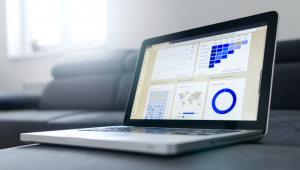Table of Contents
What is a Cash Flow?
The net figure of cash and cash equivalents moving into and out of a firm is referred to as cash flow. Inflows are represented by cash, whereas outflows are represented by money spent. At its most basic level, a company’s capacity to generate positive cash flows, or more particularly, optimize long-term free cash flow, determines its potential to create value for shareholders (FCF). After deducting any money spent on capital expenditures, FCF is the cash that a firm produces through its usual business activities. This blog will give you an idea about what is a cash flow forecast.
What is a Cash flow statement?

The Statement of Cash Flows, commonly known as the cash flow statement, is one of the three major financial statements that show how much money was made and spent over a period of time. By illustrating how the money went in and out of the firm, the statement of cash flows serves as a link between the income statement and the balance sheet. It shows how successfully a firm manages its cash position, or how well it makes cash to pay debts and finance operational expenditures. It is one of the key financial statements along with the Income statement and Balance sheet.
The cash flow statement entails three sections
1. Cash flow from operating activities
Any sources and expenditures of cash from business operations are included in the operational activities on the CFS. In simpler words, it shows how much money a firm makes from its products and services. Revenue from the sale of loans, debt, or equity instruments is included in the case of a trading portfolio or an alternative investment business. Depreciation, amortization, deferred tax, profits or losses connected with a noncurrent asset, and dividends or revenue generated from certain investment operations are all included when generating a cash flow statement using the indirect method.
2. Cash flow from investing activities
Any sources and uses of cash from a company’s investments are included in investing activities. This category includes the purchase or sale of an asset, loans provided to suppliers or received from consumers, and any payments linked to a merger or acquisition. In a nutshell, changes in equipment, assets, or investments are related to the cash generated by investing. As cash is used to purchase new equipment, facilities, or short-term assets such as marketable securities, it is a “cash-out” item. When a business sells an asset, however, the sale is counted as “cash in” when computing cash flow from investments.
3. Cash flow from financing activities
The sources of money from investors or banks, and the uses of cash given to shareholders, are all included in cash from financing operations. Dividend stock, stock buyback payments, and debt payments are included in this category. When capital is generated, fluctuations in cash are “cash in,” and when dividends are paid, they are “cash out.” When a corporation offers a bond to the public, it obtains cash funding; but, when the company pays interest to creditors, it reduces its cash.
What is a Cash Flow Forecast?

Cash flow forecasting is basically an estimate of the cash inflows and outflows of a business for a specific period of time. An effective cash flow prediction allows businesses to estimate future financial positions, prevent severe cash shortages, and maximize profits on any cash surpluses they may have. The finance department of a company is usually in charge of forecasting cash flow. However, especially in bigger organizations, the process of creating a prediction necessitates input from various stakeholders and data sources within the company.
The optimum approach to predict cash flow for your firm is determined by your business objectives, the needs of your management team or investors, and the information available inside your organization.
How to Forecast Cash Flow?
1. Identify your forecasting goal
To guarantee that a cash flow forecast provides actionable knowledge, start by identifying the business goal that the forecast should support. Cash predictions are most often used for one of the following purposes, according to our research. The best goal to create a prediction around is determined by the type of your organization. Businesses with debt, for example, will benefit from developing a cash projection to assist them plan for upcoming payments. Unless they’re also short on cash, they might not need to develop a project that supports short-term liquidity planning.
2. Select a Forecast Period
After you’ve decided on the company goal you want to support with a cash flow projection, the following step is to figure out how far out your forecast will go. There is a trade-off between information availability and prediction length. That means that the far out the forecast is, the less accurate it will be. As a result, selecting the appropriate reporting period can have a significant influence on the accuracy and consistency of your prediction.
3. Select a Forecasting Technique
Direct and indirect forecasting are the two main types of forecasting methodologies. Direct forecasting employs current flow data, whereas indirect forecasting depends on the anticipated income statement and balance sheet. The cash flow forecasting window you choose above, as well as the type of data you have available to create your forecasting model, influences the forecasting approach you choose.
4. Gather the information you’ll need for your cash flow forecast
Direct forecasting has the highest accuracy and is suitable for the majority of business objectives for which predictions are created. The best place(s) to get cash flow data for your projection is determined by how your company handles its money. However, the majority of the real cash flow data you’ll need to construct your projection may be found in bank accounts, payables, receivables, or the accounting software you’re using.
Conclusion
Large corporations frequently devote a significant amount of time and effort to forecasting at both the corporate and company levels. However, the bulk of that time is taken up by low-value tasks such as data gathering and spreadsheet manipulations rather than high-value tasks such as extracting meaningful knowledge from the data. However, automating the entire cash flow forecast operation may save you up to 90% of the time it takes to develop and assess a projection using a spreadsheet.







































